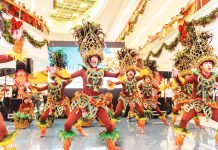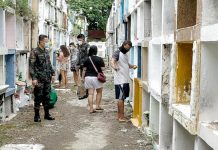
ILOILO – Dengue cases in Iloilo province have surged to 2,680 as of July 5, 2025 — a sharp rise from 1,946 cases during the same period last year — with the number of deaths doubling from five to 10, prompting health officials to renew calls for urgent community action and intensified vector control measures.
Data from the Iloilo Provincial Health Office (IPHO) show that the highest number of cases were recorded in the municipalities of San Joaquin (190), Oton (173, with one death), Dumangas (139), Leon (132), Cabatuan (117), Pototan (109, with two deaths), Lambunao (101, with one death), Janiuay (100), Ajuy (84), and Calinog (84).
Dengue, a viral illness with symptoms such as high fever, severe headaches, muscle and joint pain, and skin rashes, can become life-threatening in severe cases. It is transmitted by infected day-biting Aedes aegypti and Aedes albopictus mosquitoes.
Clustering of cases — defined as three or more cases in a barangay within four consecutive weeks — has been observed in 40 barangays across the province. The most alarming is Barangay Batuan Ilaud in Oton, which logged 16 cases despite prior intervention efforts such as spraying and entomological surveys, said Dr. Maria Socorro Colmenares-Quiñon, IPHO chief.
Based on recent surveys, the presence of Aedes aegypti and Aedes albopictus remains widespread in households.
Quiñon is appealing for stronger barangay-level participation in the search and destruction of mosquito breeding sites.
“Our community must be proactive in identifying and destroying mosquito breeding places,” she said.
She also emphasized the need for families to take responsibility.
“Manami gid nga ang mga panimalay mansig tatap man, mansig paglimpyo, indi lang ang aton nga BHWs (Barangay Health Workers),” she stressed.
The IPHO is reinforcing the 4S strategy:
1. Search and destroy mosquito breeding grounds,
2. Secure self-protection measures like repellents and clothing,
3. Seek early consultation for fever or other symptoms, and
4. Support fogging operations in identified hotspots.
The age breakdown of Iloilo’s 2,680 dengue cases shows that children are the most affected:
* 843 cases – 1–9 years old
* 744 cases – 10–19 years old
* 411 cases – 20–29 years old
* 185 cases – 30–39 years old
* 423 cases – 40 years and above
* 74 cases – under 1 year old
Other areas that also recorded significant case numbers include Pavia (83), San Dionisio (79), Barotac Nuevo (77), Sara (77, with 1 death), Banate (73), Concepcion (64), Maasin (62), Passi City (60), Carles (57, with 2 deaths), Tigbauan (57, with 1 death), Barotac Viejo (56), Santa Barbara (54), Estancia (46), San Miguel (44), Alimodian (43), Miag-ao (41), San Rafael (39), Dingle (38), Mina (35), Badiangan (34), Batad (32), Guimbal (32), Balasan (31, with 1 death), Dueñas (30, with 1 death), Leganes (28), Lemery (28), Zarraga (28), Anilao (27), Bingawan (23), Igbaras (22), San Enrique (21), Tubungan (19), and New Lucena (11).
The clustering of cases have been noted in the following barangays: Ajuy (Poblacion, 5 cases), Alimodian (Poblacion, 4 cases), Banate (Carmelo, 5 cases; and Merced, 6 cases), Barotac Nuevo ( Lagubang, 5 cases; and Salihid, 3 cases), Barotac Viejo (Vista Alegre, 4 cases), Bingawan (Poblacion, 4 cases), Cabutuan (Tiring, 3 cases), Calinog (Libot, 3 cases), Carles (Cabilao Pequeno, 4 cases; and Nalumsan, 3 cases), Concepcion (Poblacion, 3 cases; Polopina, 3 cases), Dumangas (Bolilao, 3 cases; Paloc Sool, 5 cases; Bacong, 3 cases; Ilaya 3rd, 6 cases), Janiuay (Jibolo, 7 cases; Quipot, 3 cases), Lambunao (Poblacion Ilawod, 4 cases), Lemery (Poblacion SE Zone, 3 cases), Leon (Biri Sur, 5 cases; and Talacuan, 5 cases), Oton (Cadinglian, 3 cases; Santa Rita, 3 cases; Tagbac Sur, 3 cases; Lambuyao, 4 cases; Batuan Ilaud, 16 cases; and Caboloan Sur, 3 cases), Pavia (Balabag, 5 cases; Jibao-an, 5 cases; and Ungka II, 3 cases); Pototan (Igang, 3 cases), San Enrique (Iprog, 3 cases); San Joaquin (Purok 4, 3; and Tiolas, 3 cases), Santa Barbara (Zone VI, 3 cases), Sara (Devera, 3 cases), and Tigbauan (Bangkal, 3 cases)./PN




